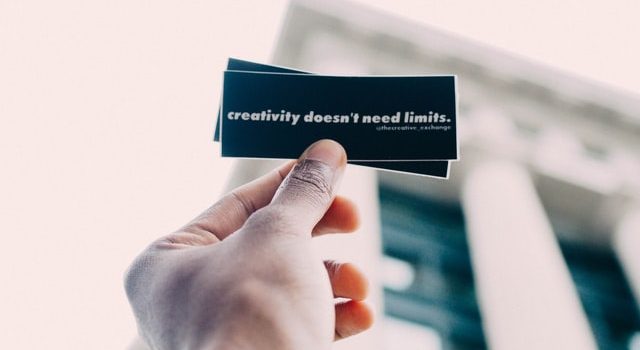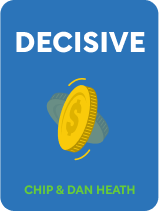

This article is an excerpt from the Shortform book guide to "Decisive" by Chip and Dan Heath. Shortform has the world's best summaries and analyses of books you should be reading.
Like this article? Sign up for a free trial here.
What is the most effective way to stimulate the creative process? How does introducing constraints help you come up with more creative ideas?
You’d think that the best way to come up with a creative solution is to brainstorm as many options as you can. While the brainstorming strategy is good, it may not always be viable. In some cases, the problem is having too many options with none being appealing. If that’s the case, try eliminating options.
Here’s how eliminating options can help stimulate creative-decision making.
Imagine Eliminating Options
The strategy to stimulate creative decision-making is somewhat counterintuitive: Imagine that one or more of your options have been eliminated. The authors claim that when we rule out an option, we handle this constraint by creatively developing other options.
For example, consider someone who wants to sign up to run a full marathon. However, they’re new to running, and they wonder if they’ll be ready in time. After they imagine eliminating the option of running a full marathon, they research other possibilities. They add “run a half-marathon” to their list. It’s an option that’s both ambitious and realistic.
Constraints Bolster Creativity
Experimental research supports the Heath brothers’ claim that limitations during the creative process drive creative problem-solving. When people are asked to brainstorm ideas without any limits, they follow their intuition instead of innovating. By contrast, when people brainstorm ideas within limits (such as limits on time or money), they tend to generate more creative solutions.
What are some additional ways you can apply creativity-inducing constraints while brainstorming options for a decision? Here are three suggestions:
Ditch the cellphone. While brainstorming options, keep your cell phone in another room. Research shows that having your cell phone within reach—whether or not you actually use it—limits your cognitive competence.
Reduce your online distractions. If you’re looking online for options for a decision, download a website-blocker for your browser so that you don’t waste time web-surfing.
Limit the time you spend developing options.Place limits on your brainstorming time so that you don’t waste too much brain power and time generating options you later reject.

———End of Preview———
Like what you just read? Read the rest of the world's best book summary and analysis of Chip and Dan Heath's "Decisive" at Shortform.
Here's what you'll find in our full Decisive summary:
- Why our minds are wired to make bad decisions
- How biases and cognitive flaws distort your thinking
- A four-step process to improve your decision-making






